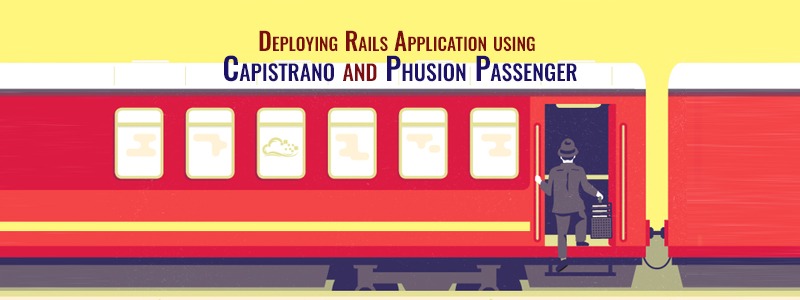In recent years, data has become one of the most valuable assets for businesses, driving decisions, powering insights, and shaping the future of industries. The intersection of web development and data science is becoming increasingly important as businesses strive to build data-driven applications. Ruby on Rails (RoR), known for its simplicity and rapid development capabilities, has traditionally been used for web development, but its role in data science is gaining attention as developers and businesses explore new ways to leverage Rails for data-centric applications.
This blog provides a strategic overview of how Ruby on Rails and data science can complement each other, the tools available, and why RoR can be an effective part of a data science project stack.
The Data Science Boom: Understanding Its Rise and Impact
In the last decade, data science has emerged as one of the most transformative forces across industries. From personalized marketing campaigns to predictive healthcare models, data-driven decision-making is reshaping the way organizations operate and innovate. The sheer volume of data being generated today — from social media, IoT devices, financial systems, and more — has fueled this boom, enabling companies to derive actionable insights and create value in ways that were once unimaginable.
This blog explores the factors behind the rise of data science, its applications, and why it has become such a critical part of modern business strategy.
What is Driving the Data Science Boom?
Several factors have contributed to the explosive growth of data science in recent years:
a. Big Data Explosion
The proliferation of digital devices, mobile applications, and online platforms has led to an exponential increase in data generation. In fact, the world generates over 2.5 quintillion bytes of data each day. This data explosion has created a pressing need for tools and methods to analyze, manage, and interpret massive datasets, making data science essential.
b. Advancements in Machine Learning and AI
The rise of machine learning (ML) and artificial intelligence (AI) technologies has been a major driver of the data science boom. As ML algorithms become more sophisticated, they enable businesses to automate decision-making processes, predict future trends, and optimize workflows, all by analyzing historical data. These AI advancements are making data science more accessible and scalable.
c. Cloud Computing
Cloud computing has played a crucial role in the data science revolution by providing scalable storage and computing power. Platforms like AWS, Google Cloud, and Azure allow businesses to store vast amounts of data and run complex analytics without needing on-premise infrastructure, lowering the barrier to entry for companies of all sizes.
d. Business Demand for Insights
As competition intensifies across industries, businesses are increasingly turning to data science for a competitive edge. The ability to gain deep insights into customer behavior, market trends, and operational efficiency helps organizations innovate, improve decision-making, and stay ahead of the competition. Data science has shifted from being a “nice-to-have” to a “must-have” in today’s business landscape.
Why Use Ruby on Rails in Data Science Projects?
While Ruby on Rails may not be the first tool that comes to mind when you think of data science (which is often dominated by Python and R), RoR can still play a crucial role, especially when it comes to building full-stack applications that integrate data science models and algorithms. Here’s why:
a. Web Application Framework
Ruby on Rails is excellent for building web applications, and many data science projects ultimately require a web interface for data visualization, user interaction, or deploying machine learning models. With its Model-View-Controller (MVC) architecture and RESTful APIs, Rails makes it easy to serve data and present it in a user-friendly format.
b. Rapid Prototyping
RoR is known for its ability to quickly prototype applications. In data science projects, particularly in startups, the ability to quickly build a front-end interface for data models or proof-of-concept dashboards can be crucial to getting buy-in from stakeholders or moving to the next phase of development.
c. Integration with Data Science Libraries
While Ruby’s ecosystem is not as rich in data science libraries as Python, there are still several gems (libraries) and tools that can facilitate data handling, analytics, and visualization in Ruby applications. Additionally, Rails can easily integrate with Python-based data science tools through APIs, enabling the best of both worlds.
What are the Tools and Gems for Data Science in Ruby on Rails?
Although Python dominates data science, Ruby has gems that enable data manipulation, machine learning, and visualization. Here are some useful gems and tools:
a. Daru (Data Analysis in Ruby)
Daru is a library for data analysis, similar to Pandas in Python. It provides tools for data manipulation, statistical analysis, and data visualization within Ruby. With Daru, developers can easily handle structured datasets and perform analytics tasks directly within a Rails application.
b. NMatrix
NMatrix is a fast matrix library for Ruby that can handle large datasets, making it useful for performing operations on high-dimensional data. It’s commonly used in machine learning and numerical computing.
c. Data Visualization Tools
Rails applications can integrate with Ruby gems for charting and data visualization, including:
- Gruff: A simple graphing library for creating bar, line, and pie charts.
- Chartkick: A popular gem that integrates with Google Charts or Chart.js to produce dynamic, interactive visualizations.
- D3.js (JavaScript library): While not Ruby-specific, D3.js can be seamlessly integrated into a Rails app to provide complex visualizations.
d. Interfacing with Python
For more advanced data science workflows, Rails can communicate with Python (using tools like PyCall or RESTful APIs). This allows developers to build the web interface using Rails while leveraging the rich data science libraries available in Python (e.g., NumPy, Pandas, TensorFlow, and Scikit-learn) on the backend.
Explore Deploying Machine Learning Models with Ruby on Rails
One of the most common uses of Rails in data science is in deploying machine learning models to production environments. While the model itself might be built using Python, R, or even Ruby-based libraries, Rails excels at turning these models into web-accessible APIs and building user-friendly dashboards. Here’s how Rails can be used for ML deployment:
a. Serving Models via API
Once a machine learning model has been trained (often in Python or R), you can expose it through a Rails-based API. The API mode introduced in Rails 5 is particularly well-suited for this use case, enabling you to efficiently build lightweight APIs that can serve model predictions or analytics results to the frontend or other systems.
b. Using Background Jobs for Predictions
Rails provides seamless integration with background job processing libraries like Sidekiq and Resque. In data-heavy applications, background jobs can be used to run predictions, data transformations, or any other time-consuming tasks, ensuring that the user experience remains smooth and responsive.
c. Visualization and Reporting
After a model is deployed, data visualizations are crucial for interpreting its predictions and results. Rails, with its extensive view layer and front-end integration capabilities, can be used to create dashboards that display live analytics, prediction results, or data trends in a way that is easy to understand for end-users.
Explore Scalability and Performance Considerations
For data-intensive applications, performance and scalability are critical. Ruby on Rails, when combined with the right technologies, can efficiently handle large datasets and complex workflows. Here are a few strategies to ensure scalability:
a. Caching with Redis
When working with large datasets or real-time data analytics, caching frequently used data or model results can significantly improve performance. Redis is commonly used with Rails to cache results, avoiding the need to re-process the same data repeatedly.
b. Background Processing
Data processing tasks, especially in data science applications, can be time-consuming. Rails makes it easy to run background jobs using Sidekiq or Delayed Job to process data asynchronously, improving the responsiveness of the application.
c. Database Optimization
In data-driven Rails applications, database performance is crucial. PostgreSQL is commonly used in Rails projects and provides advanced features like JSONB for handling semi-structured data. For analytics-heavy tasks, Rails can integrate with data warehouses like BigQuery or Snowflake to offload complex queries.
What are the Real-World Applications of Rails in Data Science?
There are several real-world applications where Rails and data science come together, providing both backend services and data-driven insights:
a. E-Commerce Recommendations
In e-commerce platforms, data science is used to create personalized recommendations for customers based on their browsing history, purchase data, and other behavioral metrics. Rails can serve as the backbone of these platforms, managing the user interface, handling APIs, and deploying recommendation engines built with machine learning.
b. Healthcare Analytics
In healthcare applications, Rails can be used to build data dashboards that show patient data, trends, or risk predictions. Machine learning models trained on patient data can be integrated into Rails-based applications to provide predictive analytics, helping doctors and caregivers make more informed decisions.
c. Financial Data Analysis
Rails can be leveraged in financial applications to build secure platforms for analyzing stock trends, predicting market movements, or generating reports. Data from these applications can be visualized using built-in Ruby tools or integrated JavaScript libraries.
Is Ruby on Rails a Good Choice for Data Science?
While Ruby on Rails (RoR) is not traditionally known as a data science tool like Python or R, it can still play a significant role in data science projects, particularly when it comes to web development and integrating data-driven applications. Here’s an overview of why RoR might or might not be a good choice for certain aspects of data science:
Why Ruby on Rails Could Be a Good Choice for Data Science:
- Web Application Framework: Ruby on Rails is a powerful web development framework, making it ideal for building data-driven web applications. If your data science project requires a user-friendly interface, dashboards, or APIs to present and interact with data, Rails is a strong candidate for the job.
- Rapid Prototyping: Rails is known for its rapid development capabilities, which is beneficial for quickly building and testing data science proof-of-concept applications. This can help get early feedback and iterate on models or data analytics tools in a short period.
- API Integration: RoR can easily integrate with Python-based machine learning models and data science tools using APIs. You can build the web interface with Rails while leveraging Python libraries like Pandas, NumPy, or TensorFlow for heavy data lifting in the backend.
- Data Presentation and Visualization: Although Rails itself doesn’t have extensive data visualization capabilities like Python’s Matplotlib or Seaborn, it can integrate with visualization gems like Chartkick or Gruff to display data in a user-friendly manner. It can also embed JavaScript libraries like D3.js for more advanced visualizations.
- Background Processing: For computationally heavy data science tasks, Ruby on Rails can use background job systems like Sidekiq to process data asynchronously, improving performance and scalability when handling large datasets.
Limitations of Ruby on Rails for Data Science:
- Lack of Native Data Science Libraries: Ruby lacks the rich ecosystem of data science libraries that Python or R have. Python’s libraries like Pandas, Scikit-learn, and TensorFlow make it the go-to language for most data science tasks, while Ruby’s native tools are more limited in comparison.
- Slower for Data Processing: Ruby is generally slower than Python or R for large-scale data processing. If your data science project requires heavy number crunching or deep learning, Ruby may not be the most efficient choice.
- Limited Community Support for Data Science: While Ruby has a strong community in web development, the data science community around Ruby is smaller compared to Python. This means fewer libraries, fewer tutorials, and less community support for data science-specific challenges.
When Ruby on Rails is a Good Fit:
- Data-Driven Web Applications: If your project focuses on building web applications that interact with data models or display analytics results, Ruby on Rails is a great option for the frontend or API layer.
- Deploying Machine Learning Models: If the heavy data science tasks are handled in Python or R, Rails can be used for deploying the models and building user interfaces to interact with them.
- Small to Mid-Sized Data Projects: For data projects that don’t involve massive datasets or deep learning models, Rails can handle typical analytics tasks with tools like Daru (Data Analysis in Ruby).
Conclusion
While Ruby on Rails is traditionally known for web development, its strategic use in data science is growing as businesses seek to combine user-friendly web interfaces with powerful data analytics and machine learning models. With its rapid development capabilities, scalability options, and integration with Python and other data science tools, Ruby on Rails can be an essential part of the tech stack in data-driven applications.
In 2024, Rails continues to offer a robust framework that, when combined with the right data science tools, provides a powerful solution for building modern, data-centric applications. Whether you’re deploying machine learning models or creating data dashboards, Rails provides the flexibility, security, and scalability to help turn raw data into actionable insights. To know more connect with RailsCarma.





